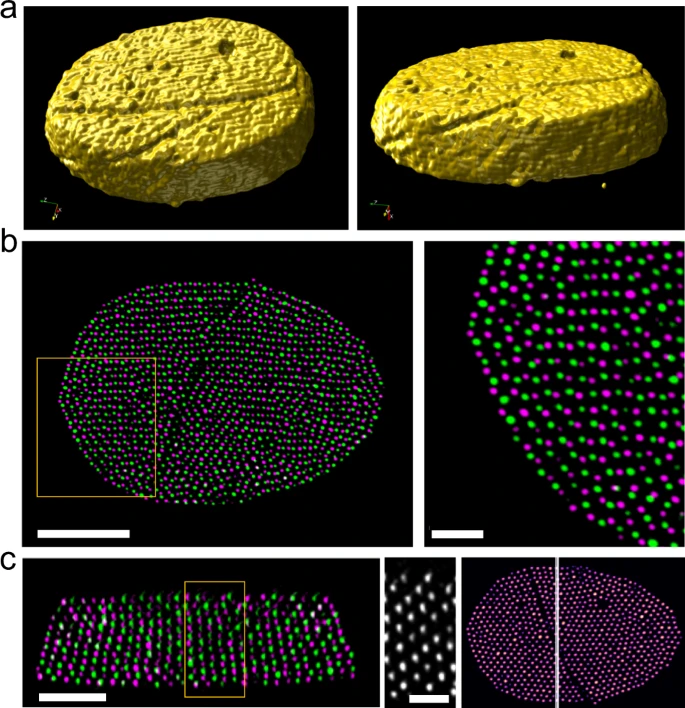Phys.org June 29, 2021
An international team of researchers (UC Berkeley, Lawrence Berkeley National Laboratory, UK) has developed a nanoparticle composite that grows into 3-D crystals.
They discovered that a tiny trace of polyolefin molecules from the centrifuge tube lining had somehow entered the mix. Subsequent experiments revealed that as the toluene solvent quickly evaporates at room temperature, the polyolefin additive helps the Au-PS nanoparticles form into 3D PGNP crystals, and to grow into crystal structure and
the size and shape of the 3D PGNP crystals are driven by the kinetic energy of olyolefins as they precipitate in the solution. The findings provide a model showing how to control the crystal structure at the single particle level. The approach could show show to fine-tune electronic and optical devices at the nano level and speed up production and eliminate errors in manufacturing…read more. Open Access TECHNICAL ARTICLE

Electron tomography and reconstruction of a single bcc crystal composed of (5.3k) Au-PS0. 60 NPs on the substrate. Credit: Nature Communications volume 12, Article number: 2767